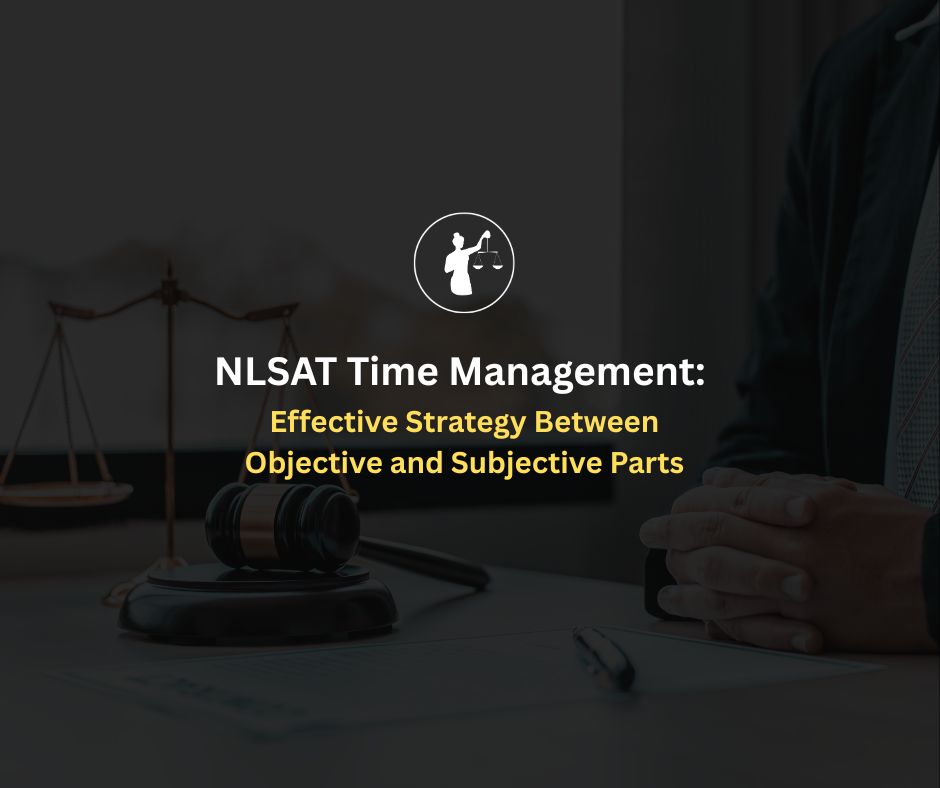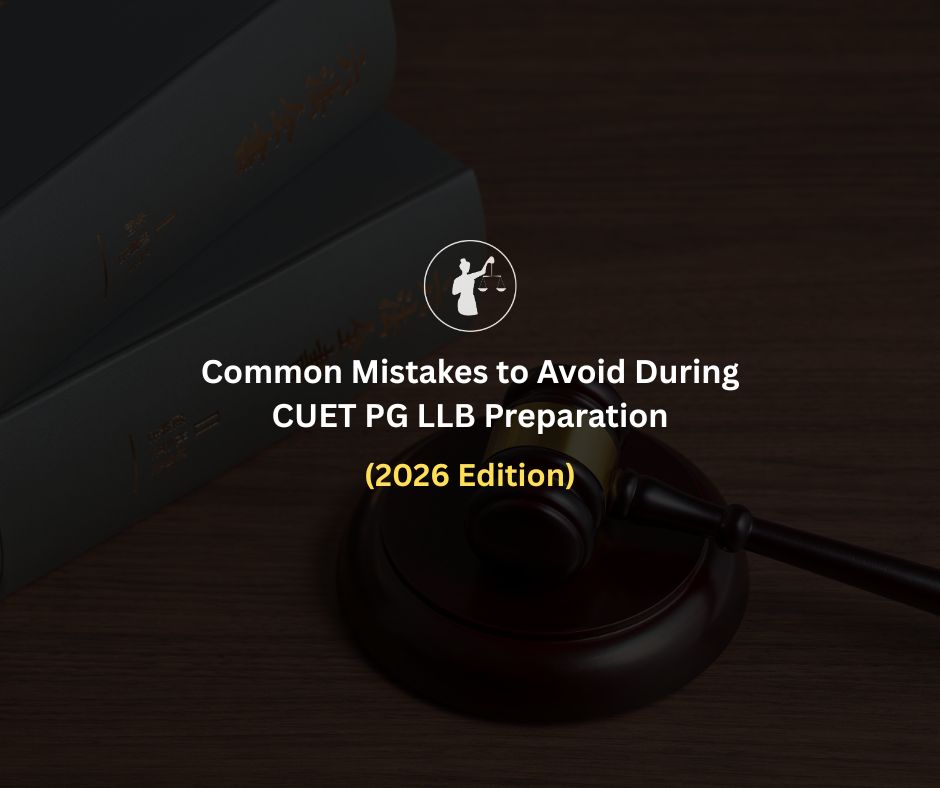
Learn the perfect NLSAT time management plan. Discover how to divide time between Part A and Part B, tackle MCQs and essays efficiently, and follow a proven NLSAT Part A vs Part B strategy to maximize your score.
Check Out NLSAT Online Coaching and Mentorship
The National Law School Admission Test (NLSAT), conducted by NLSIU Bengaluru, is one of India’s most challenging law entrance exams. Its two-part structure Part A (Objective) and Part B (Subjective) tests a wide range of skills, from logical reasoning and legal aptitude to writing precision and analytical depth.
However, even the most well-prepared candidates often underperform due to poor NLSAT time management. With 150 minutes total for 150 marks, success depends on how smartly you divide your time between speed-based MCQs in Part A and structured writing tasks in Part B.
This guide provides a detailed, research-backed NLSAT Part A vs Part B strategy, ensuring that every minute counts.
Understanding the NLSAT Structure: Two Parts, Two Skill Sets
The NLSAT time management challenge arises from the distinct nature of these two parts:
Part A tests speed and accuracy.
Part B demands clarity, structure, and analytical thinking.
Balancing both is essential for clearing the Part A cutoff (to qualify for evaluation of Part B) and excelling in the subjective writing stage.
Read More: Building Legal Reasoning for Beginners Made Simple
Recommended Time Split
Total = 150 minutes
This balanced approach ensures you don’t overspend time in Part A and risk underperforming in Part B.
Read More: NLUO 3-Year LLB 2026: Exam, Syllabus & Preparation
75 MCQs = 75 marks
Negative marking: -0.25 per wrong or unanswered question
Goal: Attempt 60+ with high accuracy
Don’t start slow: Warm up with reasoning or GK before comprehension.
Mark smartly: Eliminate two wrong options first.
Don’t guess blindly: The negative marking can drag your score down.
Flag and move on: Avoid spending >1 minute per question.
Use the last 5 mins to recheck flagged items.
Strong NLSAT time management in Part A ensures you qualify for Part B evaluation.
Read More: Common NLSAT Mistakes and How to Avoid Them
Once you clear the Part A threshold (top 1:5 candidates), your Part B answers decide your final merit ranking. This section rewards structured analysis, coherence, and concise legal writing not length.
Aim for concise yet well-reasoned answers. Avoid overwriting clarity scores higher than length.
Spend 2–3 minutes outlining key arguments.
Divide essay into Introduction (50 words), Arguments (350 words), Conclusion (100 words).
Focus on coherence, relevance, and conciseness.
Use current legal or social examples for credibility.
Read More: NLSAT Prep in Tamil Nadu: English Writing & GK Tips
Consistency in timed practice is the only way to perfect your NLSAT Part A vs Part B strategy.
Weekly Practice Routine for Optimal Time Balance
Track progress using a “Time Utilization Chart” to monitor section-wise efficiency gains.
Read More: Balancing MH CET Law and NLSAT Preparation Tips
The NLSAT 2025 changes reducing problem-based questions from 6 to 5 and word limit to 200–250 words demand sharper, faster articulation. Your NLSAT time management must adapt accordingly:
Focus on precision over elaboration.
Dedicate more time to planning and structuring rather than writing paragraphs.
Avoid repetition each sentence should add analytical value.
Ensure handwriting clarity if appearing offline.
Balanced time = balanced success. Don’t let one section overshadow the other.
1. How much time should I spend per question in NLSAT Part A?
On average, you should spend 55–60 seconds per question in NLSAT Part A. Since the section has 75 MCQs in 70–75 minutes, your NLSAT time management must focus on speed and accuracy.
Aim to attempt 60–65 high-confidence questions.
Don’t overthink difficult ones mark and revisit if time permits.
Use elimination techniques to maintain accuracy without wasting time.
2. Is it better to start with Part B first in NLSAT?
No. Always start with Part A because only the top scorers in Part A qualify for Part B evaluation (in a 1:5 ratio). Starting with Part A ensures you meet the cutoff requirement, while effective NLSAT time management later helps you perform well in Part B. Once Part A is complete, shift focus to Part B using a short 3-minute transition to reset your mindset for structured writing.
3. How can I improve my NLSAT Part A vs Part B strategy?
Improving your NLSAT Part A vs Part B strategy involves:
Practicing full-length mock tests weekly.
Tracking section-wise time spent using a stopwatch or test analytics.
Balancing speed drills for Part A with structured writing for Part B.
Refining your IRAC (Issue–Rule–Application–Conclusion) method for concise short answers. Regular feedback from mentors or mock evaluations helps fine-tune both speed and clarity.
4. What’s the ideal time split between NLSAT Part A and Part B?
The most effective NLSAT time management plan divides the 150 minutes as follows:
This balance ensures adequate time for both speed-based MCQs and analytical writing.
5. Should I attempt all questions in Part A even if unsure?
No. Due to negative marking (-0.25), guessing can reduce your total score. Under good NLSAT time management, you should:
Attempt only questions you’re reasonably confident about.
Eliminate options systematically before making educated guesses.
Skip questions that might risk your accuracy, as unanswered ones also attract the same penalty.
6. How can I manage time effectively in NLSAT Part B essay writing?
In the essay section of Part B, dedicate 15–20 minutes total:
2 minutes: Outline your structure and arguments.
12–15 minutes: Write a balanced essay (Introduction, Two Arguments, Conclusion).
3 minutes: Proofread and correct errors. This disciplined approach aligns with efficient NLSAT time management and ensures clarity and coherence.
7. How many mocks should I take to improve NLSAT time management?
Ideally, take 8–10 full-length mocks before the exam. Each mock should simulate real exam conditions with timed sections for both Part A and Part B. Use performance analytics to evaluate:
Time spent per question
Accuracy percentage
Writing speed and structure quality Regular mock testing directly strengthens your NLSAT Part A vs Part B strategy.
8. What are the biggest time management mistakes in NLSAT?
The most common NLSAT time management errors include:
Spending too long on comprehension or reasoning questions.
Writing excessively long answers in Part B.
Ignoring review time for MCQs.
Skipping structured planning before writing essays. Avoid these by following a strict time log, breaking your exam into mini-targets (per 15–20 minutes).
9. Does handwriting speed affect NLSAT Part B performance?
Yes, especially since Part B is written offline. Good NLSAT time management includes handwriting drills for speed and legibility. Practice writing concise 200–250-word answers within 10–12 minutes to build efficiency without compromising clarity.
10. Can I use the same strategy for NLSAT and other law entrance exams?
Not entirely. Unlike CLAT or AILET, the NLSAT Part A vs Part B strategy focuses more on analytical reasoning and written expression. Other exams emphasize factual recall, while NLSAT rewards structured, time-bound thinking. Hence, customize your NLSAT time management plan specifically for its hybrid objective–subjective pattern.
11. What’s the best last-minute time management routine before NLSAT?
In your final week:
Attempt one full mock every alternate day under timed conditions.
Review your Part A speed and Part B answer structure.
Allocate fixed time slots: 75 mins for MCQs, 75 mins for writing. This routine strengthens confidence and familiarity with the real-time NLSAT time management rhythm.
Excelling in NLSAT isn’t just about what you know it’s about how you manage your 150 minutes. By following this NLSAT Part A vs Part B strategy, you can:
Clear the Part A cutoff confidently
Deliver concise, high-impact answers in Part B
Maximize marks across both speed and depth components
Remember: Every second counts in NLSAT. Train yourself to think fast, write smart, and manage time like a strategist.





